#The Sign of Four
Text
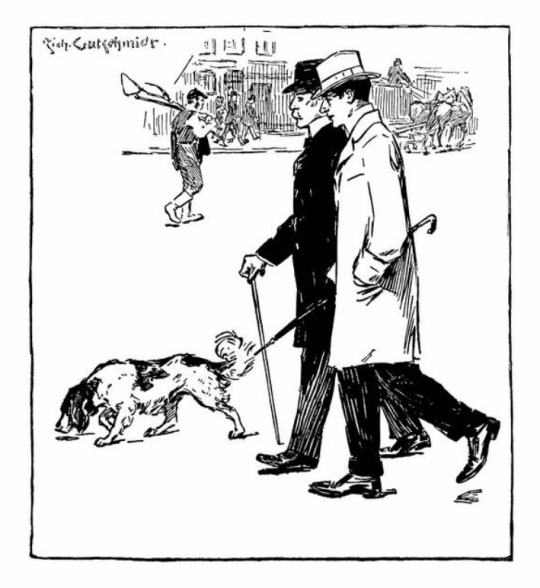
The Sign of Four illustration by Richard Gutschmidt (1902)
291 notes
·
View notes
Text
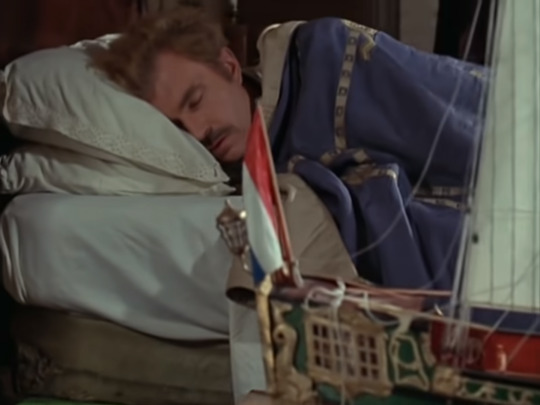

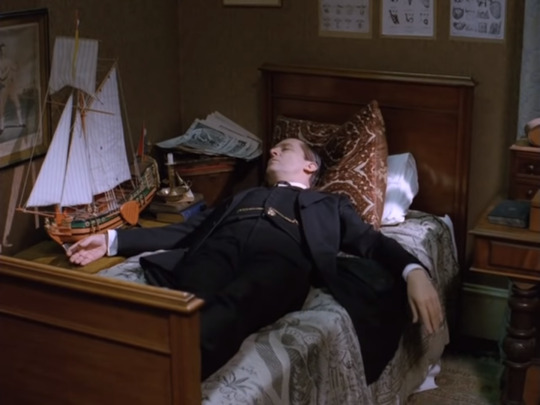
this model ship under construction in watson's room in 'the resident patient' and next to holmes's bed in 'the sign of four'
#the proverbial ship#started reading acd & learned w is married to the girl from sign of 4.. glad granada decided to ignore that#granada holmes#the resident patient#the sign of four#jeremy brett#david burke#baker street#my posts#sherlock holmes#watson's room#holmes's room
1K notes
·
View notes
Text
My first reaction to learning Watson has an older brother is the fact that both him and Holmes are the younger siblings in their families, which would make their tendency for misadventures and to getting involved in other people's businesses a life-long trait.
On a more morbid note however, the fact that Watson has an older brother, one with whom he seemingly had a not-so-good relationship with before his death, also paints his reaction to learning about Mycroft in a whole new light. Instead of the general happiness of finally learning about Holmes' history and family, there's an added layer of Watson getting to see a working, happy, brotherly relationship, one he presumably didn't have and now could never have.
And depending on whether or not you think Watson meeting Mycroft happened before or after this story leads to different interpretations. The Baring-Gould chronology puts The Greek Interpreter before The Sign of the Four, meaning Watson accusing Holmes of digging into his family history perhaps has a sting of envy for not having as good a relationship with an older brother as he knows Holmes does.
However, if The Greek Interpreter happened after this story, then Watson accusing Holmes could be what led to Holmes being so unyielding of his own family history, presumably so as to not upset Watson. Though Holmes is generally closed off about himself regarding those sorts of things.
In addition, the detail that Watson's brother drank himself to death makes Watson's view of Holmes' drug use in a new light as well. Looking at this paragraph specifically:
“But consider!” I said, earnestly. “Count the cost! Your brain may, as you say, be roused and excited, but it is a pathological and morbid process, which involves increased tissue-change and may at last leave a permanent weakness. You know, too, what a black reaction comes upon you. Surely the game is hardly worth the candle. Why should you, for a mere passing pleasure, risk the loss of those great powers with which you have been endowed? Remember that I speak not only as one comrade to another, but as a medical man to one for whose constitution he is to some extent answerable.”
Without the context that Watson is speaking about Holmes doing cocaine, I can easily imagine Watson talking to his brother about drinking too much. Obviously cocaine and alcohol abuse are different things, but the list of negative effects, not to mention the fact that Watson feels answerable to their condition could apply equally from a partner in crime as to a younger sibling to an older one.
The opening of the story reveals that Watson has wanted to, but not yet been able to confront Holmes about his drug use. I imagine Watson was the same way with his brother. And we know the watch he tests Holmes with came into his possession recently. Ergo, I'd say that his brother's death is probably the impetus for Watson to finally say something, so as to not repeat what happened with his brother.
#letters from watson#mary morstan next time yay#the sign of four#the sign of the four#arthur conan doyle#sherlock holmes#john h watson#mycroft holmes
91 notes
·
View notes
Text
Domesticity in The Sign Of Four
Can we just take a moment to appreciate the domestic stuff in the chapter The Baker Street Irregulars?
So basically what happens, is after a midnight goose chase (ft. Holmes and Toby the mongrel) and the three of them return to 221B, Watson is tired and in an iffy mood. He goes upstairs to take a shower and a change of clothes, and when he comes down again, breakfast is already laid and Holmes is pouring out the coffee ^_^
After a chat about how nothing new's going on in the case, Watson asks Holmes:
"...Are you going to bed, Holmes?"
"No. I am not tired. I have a curious constitution. I never remember feeling tired by work, though idleness exhausts me completely..."
And Holmes then explains to Watson the mystery of the criminal's accomplice, the savage until he notices Watson is tired, and plays a beautiful melody on his violin which he composed himself to lull his friend to sleep...
"...Look here Watson; you look regularly done. Lie down there on the sofa and see if I can put you to sleep."
He took up his violin from the corner, and as I stretched myself out, he began to play some low, dreamy, melodious air - his own, no doubt, for he had a remarkable gift for improvisation. I have a vague remembrance of his gaunt limbs, his earnest face and the rise and fall of his bow. Then I seemed to be floated peacefully away on a soft sea of sound until I found myself in dreamland...
Ironically, this is also the story where Watson gets married - some people think that the above is a last ditch effort on the part of Holmes to keep his companion... 🥲😭
171 notes
·
View notes
Text

The Sign of Four by Arthur Conan Doyle
62 notes
·
View notes
Text


The Sign of Four (1987)
#sherlock holmes 1984#jeremy brett holmes#granada holmes#sherlock holmes#jeremy brett#sherlock holmes granada#daily dose of granada holmes#john watson#dr john watson#acd holmes#acd sherlock holmes#acd watson#edward hardwicke watson#edward hardwicke#the sign of four 1987#the sign of four
273 notes
·
View notes
Text

sherlock and john really said "you can't sit with us"
#sherlock holmes#granada holmes#the sign of four#please there's so little space there already#and you have someone with you!!!#where's he supposed to sit!!!!
85 notes
·
View notes
Text
“It is as clear as daylight,” I answered. “I regret the injustice which I did you. I should have had more faith in your marvellous faculty. May I ask whether you have any professional inquiry on foot at present?”
“None. Hence the cocaine. I cannot live without brain-work. What else is there to live for? Stand at the window here. Was ever such a dreary, dismal, unprofitable world? See how the yellow fog swirls down the street and drifts across the duncolored houses. What could be more hopelessly prosaic and material? What is the use of having powers, doctor, when one has no field upon which to exert them? Crime is commonplace, existence is commonplace, and no qualities save those which are commonplace have any function upon earth.”
Finally we start The Sign of Four and "The Science of Deduction" is so bittersweet. It's nice to see Holmes using his superpowers with the now legendary clock, but at the same time is so sad to see his drug adiction and Watson trying to help him, and is more important considering Watson's personal history. He lost his brother due to alcohol, and now he don't want to lose Holmes.
#sherlock holmes#john h watson#the science of deduction#the sign of four#SIGN#letters from watson#letters in the underground
29 notes
·
View notes
Text
The Sign of the Four: The Statement of the Case
CW for the end of this as it includes discussions of child murder and detailed discussions of capital punishment.
Turbans have never been particularly common in the United Kingdom; these days, they are most likely to be worn by West African women or those who are undergoing chemotherapy.
It was the norm for a married woman to be referred to as "Mrs. [husband's name]", especially on something like a dinner invite. Historically, in the English common law system the United States also uses, a woman's legal identity was subsumed by her husband on marriage, in something called coverture. In some cases, a woman who ran her own business could be treated as legally single (a femme sole) and so sue someone - or be sued. This practice was gradually abolished, but did fully end until the 1970s.
@myemuisemo has excellently covered the reasons why Mary would have been sent back to the UK.
As you were looking at a rather long trip to and from India, even with the Suez Canal open by 1878, long leave like this would have been commonplace.
The Andaman Islands are an archipelago SW of what is now Myanmar and was then called Burma. The indigenous Andamanese lived pretty much an isolated experience until the late 19th century when the British showed up. The locals were pretty hostile to outsiders; shipwrecked crews were often attacked and killed in the 1830s and 1840s, the place getting a reputation for cannibalism.
The British eventually managed to conquer the place and combine its administration with the Nicobar Islands. Most of the native population would be wiped out via outside disease and loss of territory; they now number around 500 people. The Indian government, who took over the area on independence, now legally protect the remaining tribespeople, restricting or banning access to much of the area.
Of particular note are the Sentinelese of North Sentinel Island, who have made abundantly clear that they do not want outside contact. This is probably due to the British in the late 1800s, who kidnapped some of them and took them to Port Blair. The adults died of disease and the children were returned with gifts... possibly of the deadly sort. Various attempts by the Indian government (who legally claimed the island in 1970 via dropping a marker off) and anthropologists to contact them have generally not gone well, with the islanders' response frequently being of the arrow-firing variety. Eventually, via this and NGO pressure, most people got the hint and the Indian government outright banned visits to the island.
In 2004, after the Asian tsunami that killed over 2,000 people in the archipelago, the Indian Coast Guard sent over a helicopter to check the inhabitants were OK. They made clear they were via - guess what - firing arrows at the helicopter. Most of the people killed were locals and tourists; the indigenous tribes knew "earthquake equals possible tsunami" and had headed for higher ground.
In 2006, an Indian crab harvesting boat drifted onto the island; both of the crew were killed and buried.
In 2018, an American evangelical missionary called John Allen Chau illegally went to the island, aiming to convert the locals to Christianity. He ended up as a Darwin Award winner and the Indians gave up attempts to recover his body.
The first British penal colony in the area was established in 1789 by the Bengalese but shut down in 1796 due to a high rate of disease and death. The second was set up in 1857 and remained in operation until 1947.
People poisoning children for the insurance money was a sadly rather common occurrence in the Victorian era to the point that people cracked jokes about it if a child was enrolled in a burial society i.e. where people paid in money to cover funeral expenses and to pay out on someone's death.
The most infamous of these was Mary Ann Cotton from Durham, who is believed to have murdered 21 people, including three of her four husbands and 11 of her 13 children so she could get the payouts. She was arrested in July 1872 and charged with the murder of her stepson, Charles Edward Cotton, who had been exhumed after his attending doctor kept bodily samples and found traces of arsenic. After a delay for her to give birth to her final child in prison and a row in London over the choice the Attorney General (legally responsible for the prosecution of poisoning cases) had made for the prosecuting counsel, she was convicted in March 1973 of the murder and sentenced to death, the jury coming back after just 90 minutes. The standard Victorian practice was for any further legal action to be dropped after a capital conviction, as hanging would come pretty quickly.
Cotton was hanged at Durham County Goal that same month. Instead of her neck being broken, she slowly strangled to death as the rope had been made too short, possibly deliberately.
Then again, the hangman was William Calcraft, who had started off flogging juvenille offenders at Newgate Prison. Calcraft hanged an estimated 450 people over a 45-year career and developed quite a reputation for incompetence or sadism (historians debate this) due to his use of short drops. On several occasions, he would have to go down into the pit and pull on the condemned person's legs to speed up their death. In a triple hanging in 1867 of three Fenian who had murdered a police officer, one died instantly but the other two didn't. Calcraft went down and finished one of them off to the horror of officiating priest Father Gadd, who refused to let him do the same to the third and held the man's hand for 45 minutes until it was over. There was also his very public 1856 botch that led to the pinioning of the condemned's legs to become standard practice.
Calcraft also engaged in the then-common and legal practice of selling off the rope and the condemned person's clothing to make extra money. The latter would got straight to Madame Tussaud's for the latest addition to the Chamber of Horrors. Eventually, he would be pensioned off in 1874 aged 73 after increasingly negative press comment.
The Martyrdom of Man was a secular "universal" history of the Western World, published in 1872.
26 notes
·
View notes
Text
Oh no! Toby's got one of Watson's shoes! (and happy Holmes noises)
I love how the doggo actor for Toby is too good to actually chew the slipper so Edward Hardwicke just has to rub it under the doggo's chin 🤣
#sherlock holmes#the return of sherlock holmes#granada television#granada holmes#the sign of four#dr john watson#dr watson#john watson#edward hardwicke#sir arthur conan doyle#arthur conan doyle#conan doyle#acd#dog#dogs#doggo#doggos#video
98 notes
·
View notes
Text

Sherlock Holmes Aesthetic
#sherlock holmes#221b baker street#baker street#london#london city#england#english#detective#private detective#scotland yard#john watson#doctor watson#mycroft holmes#police#a study in scarlet#violin#violist#hound of the baskervilles#the sign of four#arthur conan doyle#books#tv series#movies#sherlock fandom#aesthetic#sir arthur conan doyle#james moriarty#the adventures of sherlock holmes#books aesthetic#edit
29 notes
·
View notes
Text
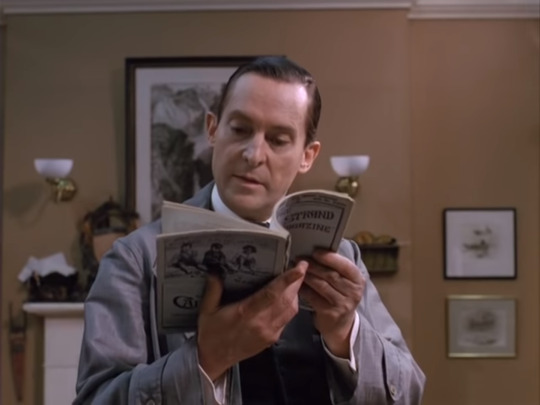
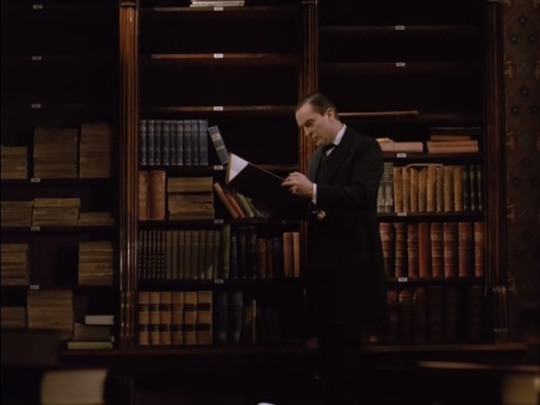


#reading strand mag how meta#the sign of four#jeremy brett#granada holmes#sherlock holmes#my posts#books#baker street#holmes's room#the proverbial ship
185 notes
·
View notes
Text

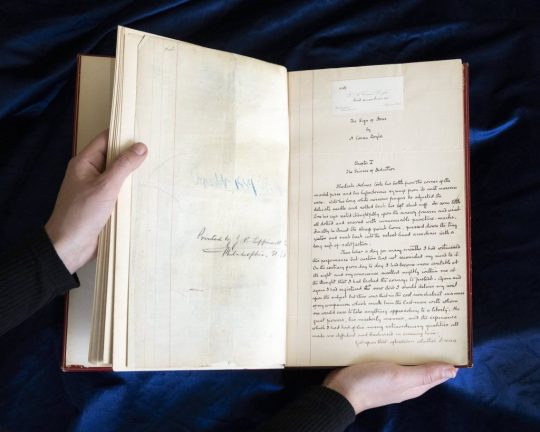
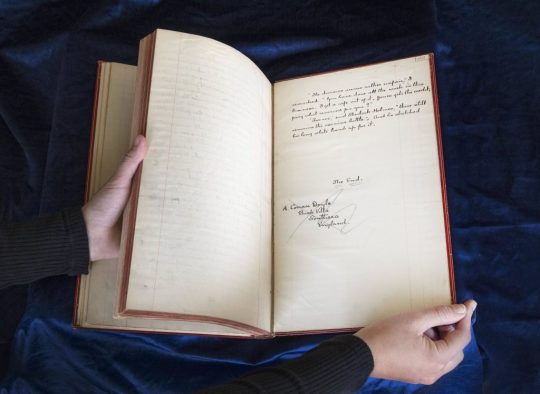
The original handwritten manuscript for "The Sign of Four" by Sir Arthur Conan Doyle (1889)
#to be auctioned by sothebys for over a million bucks in june lol#sorry i took a hiatus for a minute im a mess rn#anywho howre yall doing#sherlock holmes#holmes#acd#sir arthur conan doyle#manuscript#sherlock holmes manuscript#sothebys#sign#the sign of four
20 notes
·
View notes
Text
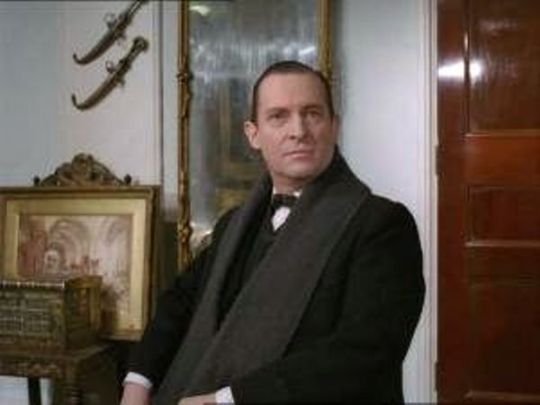
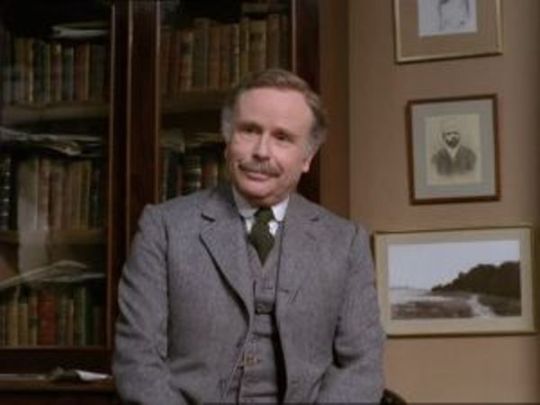


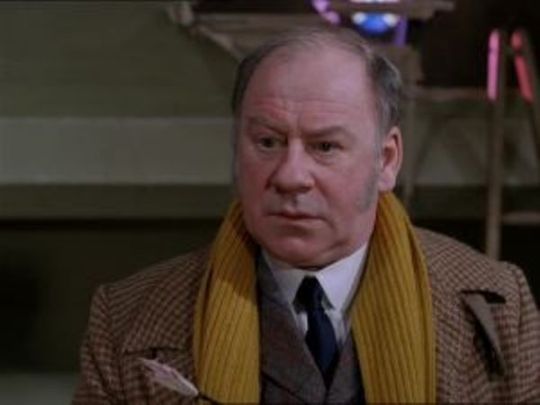
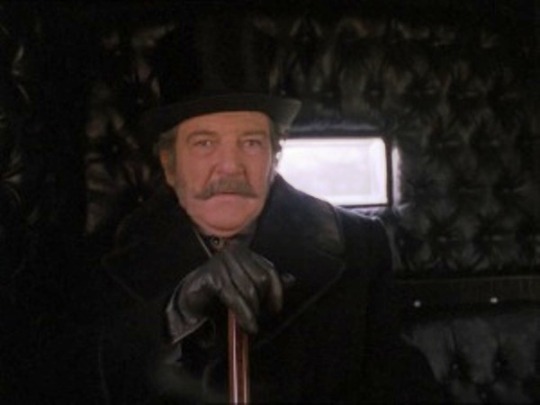

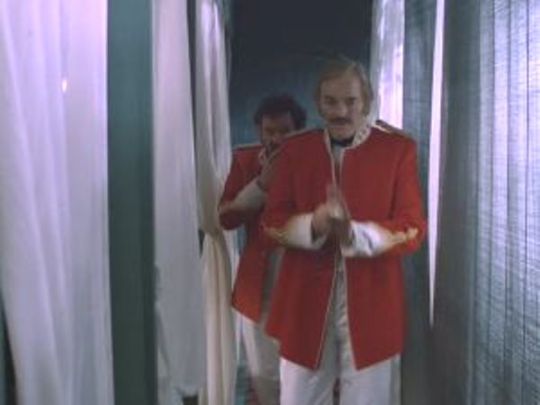




Jeremy Brett as Sherlock Holmes, Edward Hardwicke as Dr. John H. Watson, Rosalie Williams as Mrs. Hudson, Jenny Seagrove as Miss Mary Morstan, Emrys James as Inspector Athelney Jones, Robin Hunter as Major Sholto, Ronald Lacey as Thaddeus/Bartholomew Sholto, Terence Skelton as Captain Morstan, John Thaw as Jonathan Small, Kiran Shah as Tonga, Lila Kaye as Mrs. Mordecai Smith and Toby in "The Sign of Four"
22 notes
·
View notes
Text

137 notes
·
View notes
Text

138 notes
·
View notes